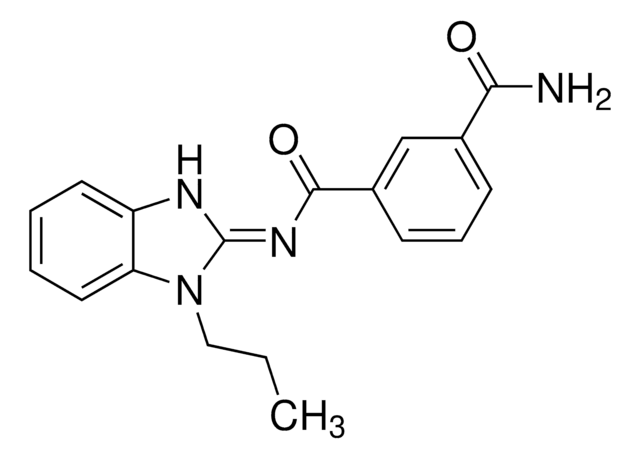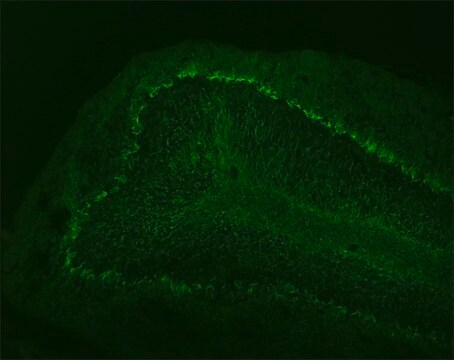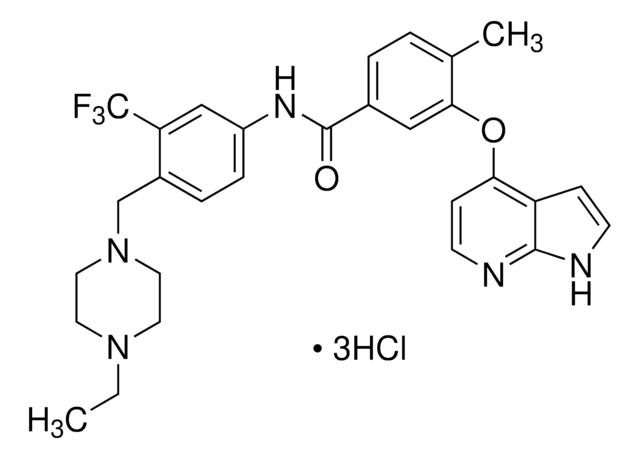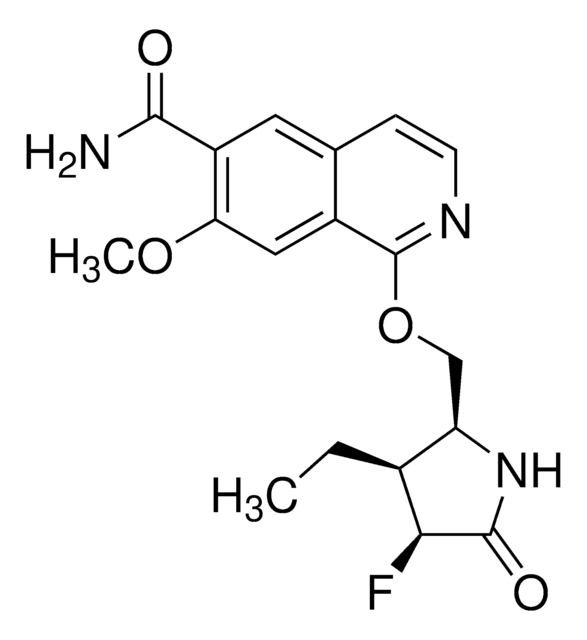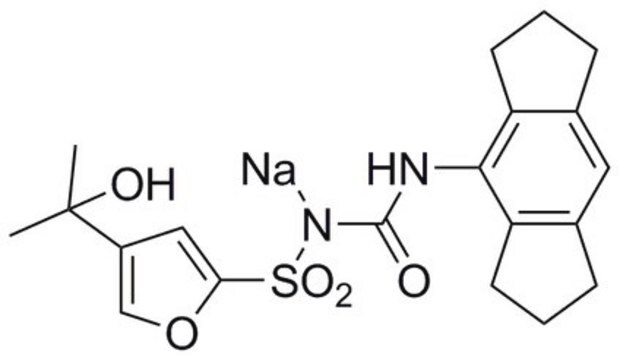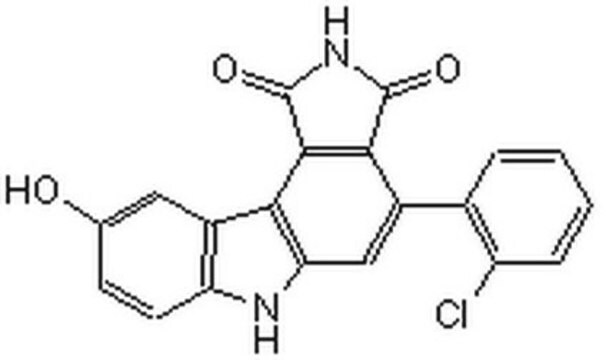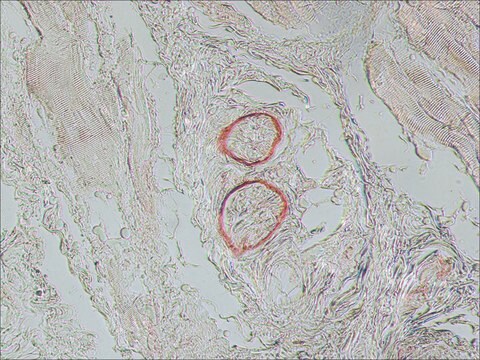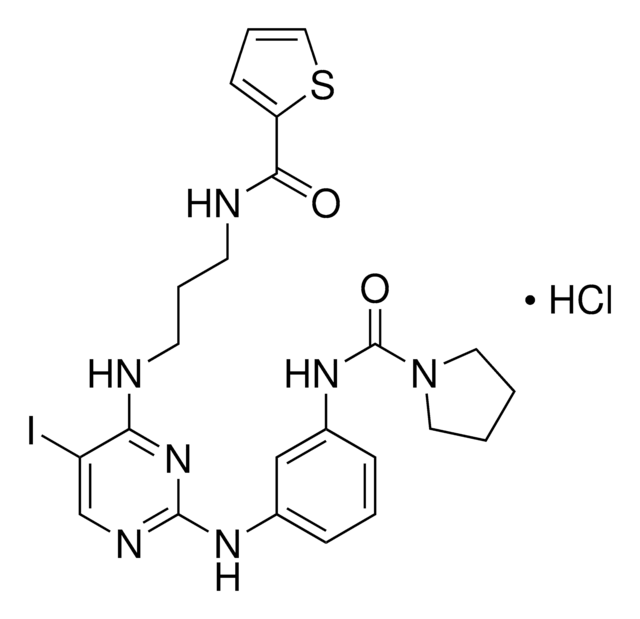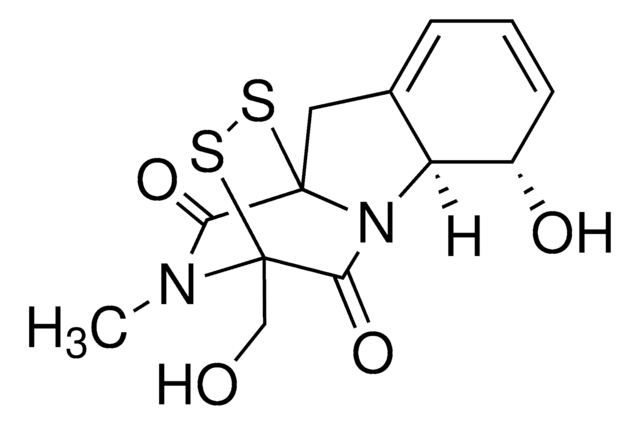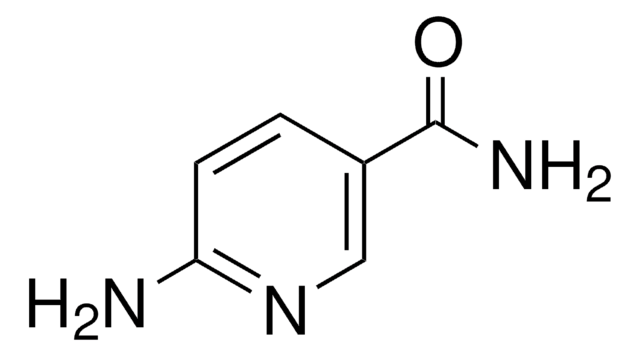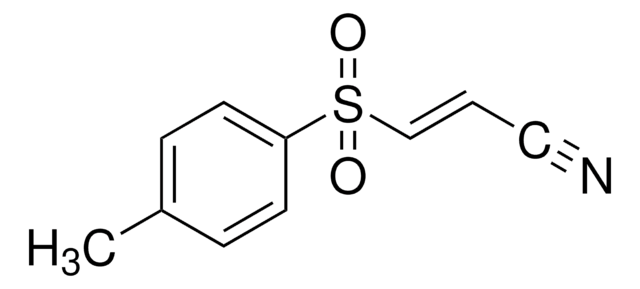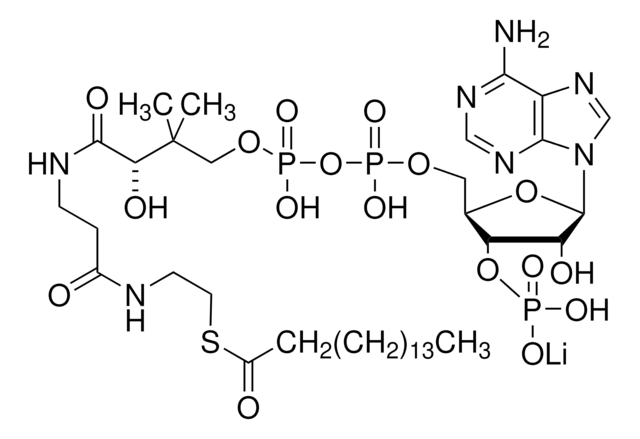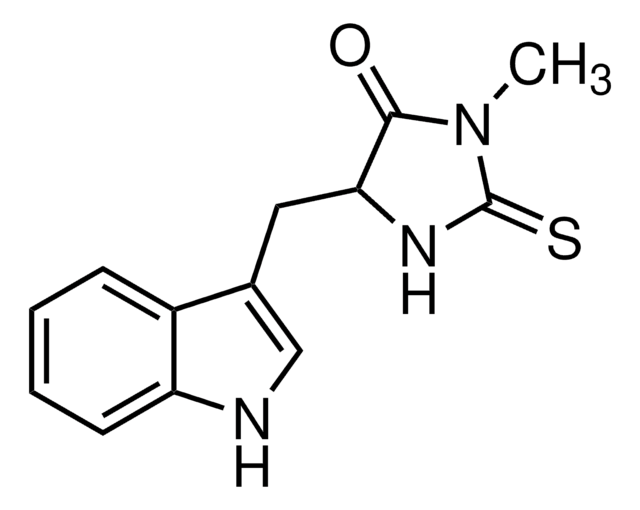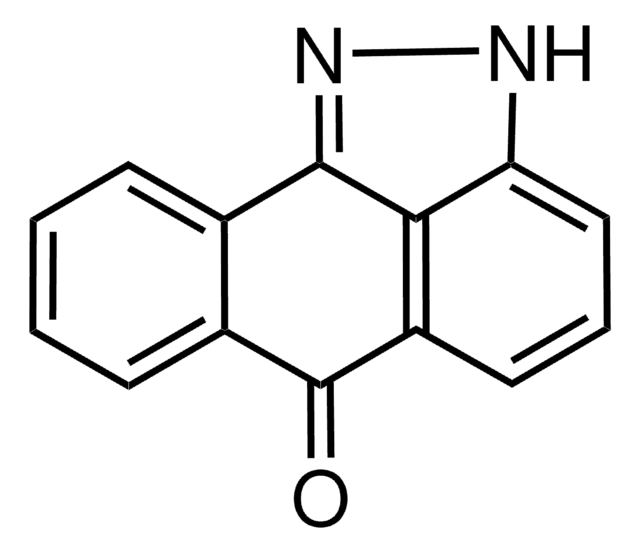O9890
5Z-7-Oxozeaenol
≥98% (HPLC), powder, TAK1 inhibitor
Sinonimo/i:
C 292, F 152, FR148083, L 783279, LL-Z1640-2
About This Item
Prodotti consigliati
Nome del prodotto
5Z-7-Oxozeaenol, ≥98% (HPLC)
Livello qualitativo
Saggio
≥98% (HPLC)
Stato
powder
Colore
white to off-white
Solubilità
DMSO: >10 mg/mL
Temperatura di conservazione
2-8°C
Stringa SMILE
COc1cc(O)c2C(=O)O[C@@H](C)CC=CC(=O)[C@@H](O)[C@@H](O)C\C=C\c2c1
InChI
1S/C19H22O7/c1-11-5-3-7-14(20)18(23)15(21)8-4-6-12-9-13(25-2)10-16(22)17(12)19(24)26-11/h3-4,6-7,9-11,15,18,21-23H,5,8H2,1-2H3/b6-4+,7-3-/t11-,15-,18+/m0/s1
NEQZWEXWOFPKOT-BYRRXHGESA-N
Applicazioni
- as transforming growth factor β-activated kinase 1 (TAK1) inhibitor to treat human colon cancer cells
- as TAK1-specific inhibitor to provide intraperitoneal injection to mice for aortic banding
- as TAK1 inhibitor to treat cells for luciferase reporter assay
- to test growth and differentiation factor 2 (GDF2)-mediated anoikis
Azioni biochim/fisiol
Caratteristiche e vantaggi
Codice della classe di stoccaggio
11 - Combustible Solids
Classe di pericolosità dell'acqua (WGK)
WGK 3
Punto d’infiammabilità (°F)
Not applicable
Punto d’infiammabilità (°C)
Not applicable
Scegli una delle versioni più recenti:
Possiedi già questo prodotto?
I documenti relativi ai prodotti acquistati recentemente sono disponibili nell’Archivio dei documenti.
I clienti hanno visto anche
Articoli
The extracellular signal regulated kinase (ERK1 and ERK2) pathways are activated by mitogens and play an important role in controlling cell growth and differentiation.
The mitogen-activated protein kinase (MAPK) family consists of both stress activated (SAPK) and mitogen-activated (MAPK) protein kinases. They form a network of signal transduction cascades that mediate cellular responses to a diverse range of stimuli, including growth factors, chemical or osmotic stress, irradiation, bacterial infection and proinflammatory cytokines.
Il team dei nostri ricercatori vanta grande esperienza in tutte le aree della ricerca quali Life Science, scienza dei materiali, sintesi chimica, cromatografia, discipline analitiche, ecc..
Contatta l'Assistenza Tecnica.
